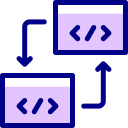Algorithmic Patterns as Everyday Playbooks
Split big goals into halves, then halves again, until each slice is easy. Like quicksort on your to-do list, you decide a pivot task, partition the rest, and proceed. It feels elegant because it is. Subscribe to get our printable divide-and-conquer daily planner.
Algorithmic Patterns as Everyday Playbooks
Sometimes the best move is the fastest gain: a greedy step. Tackle the highest-value task first when deadlines loom. In code, this builds near-optimal solutions fast; in life, it builds momentum. Comment with one greedy choice that saved your morning.










